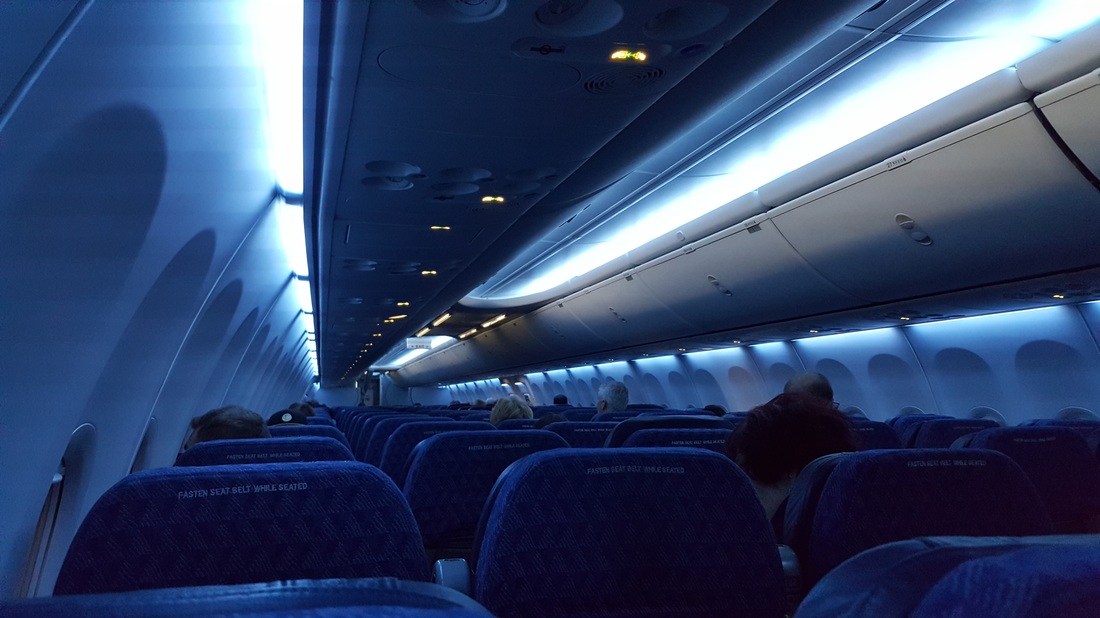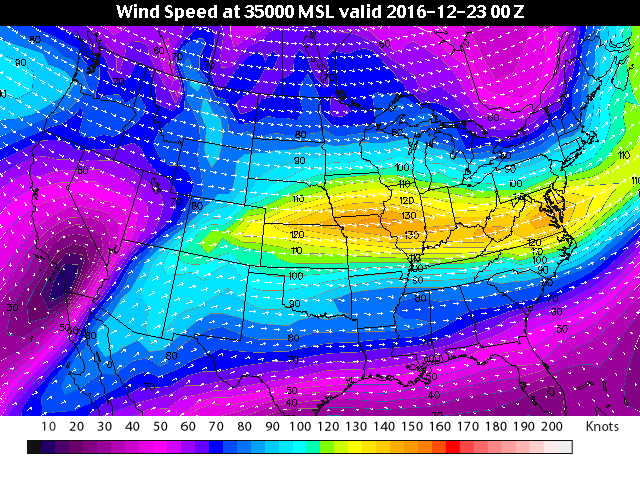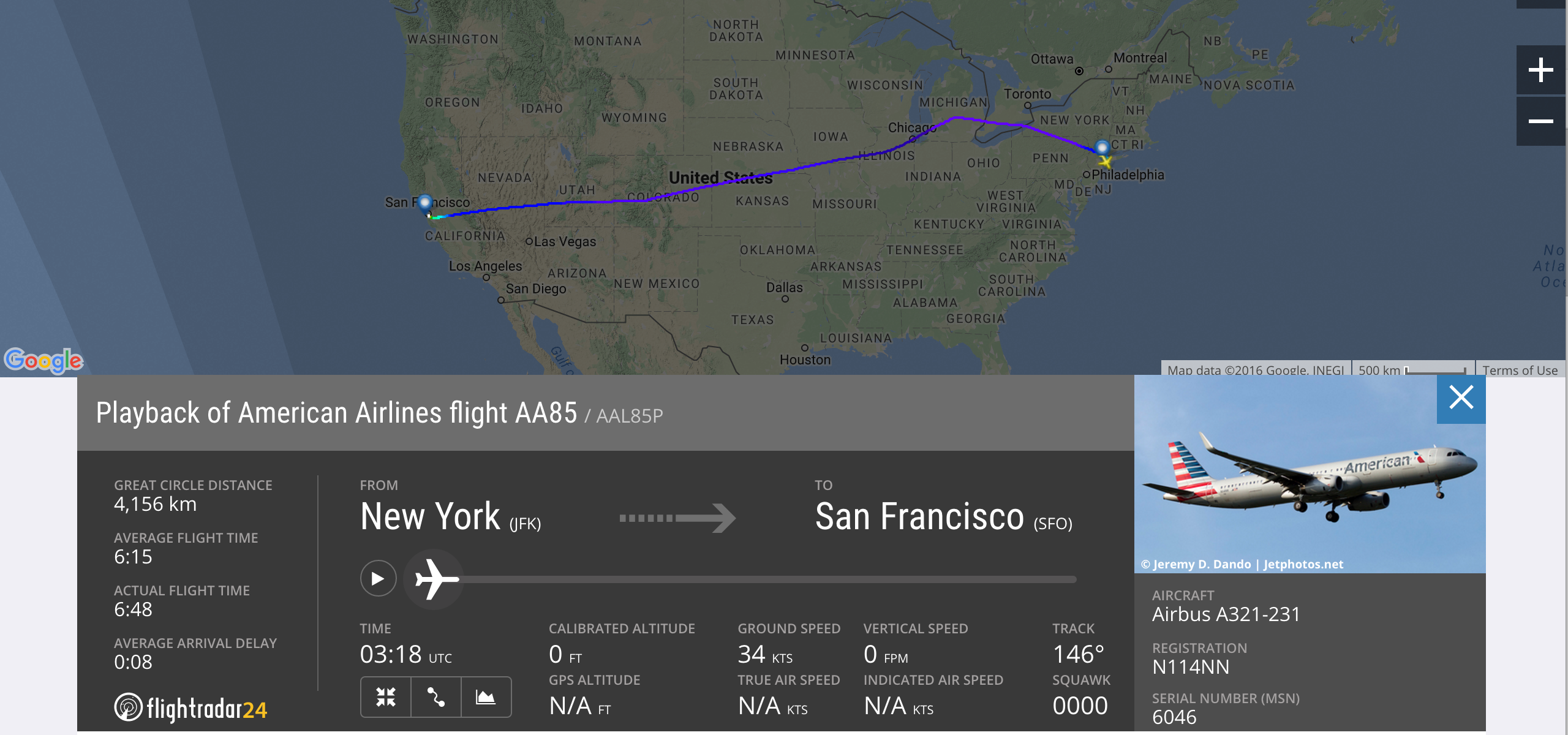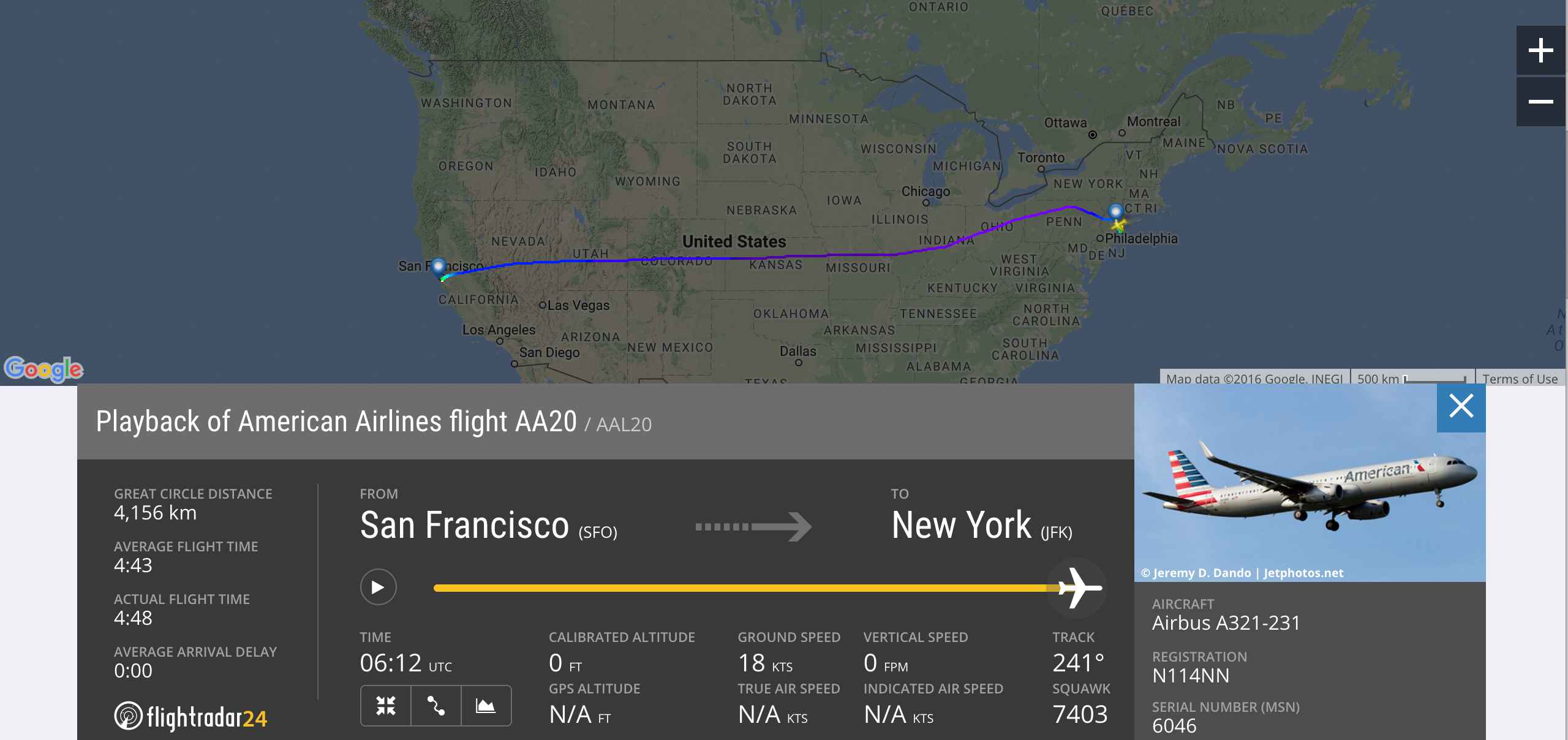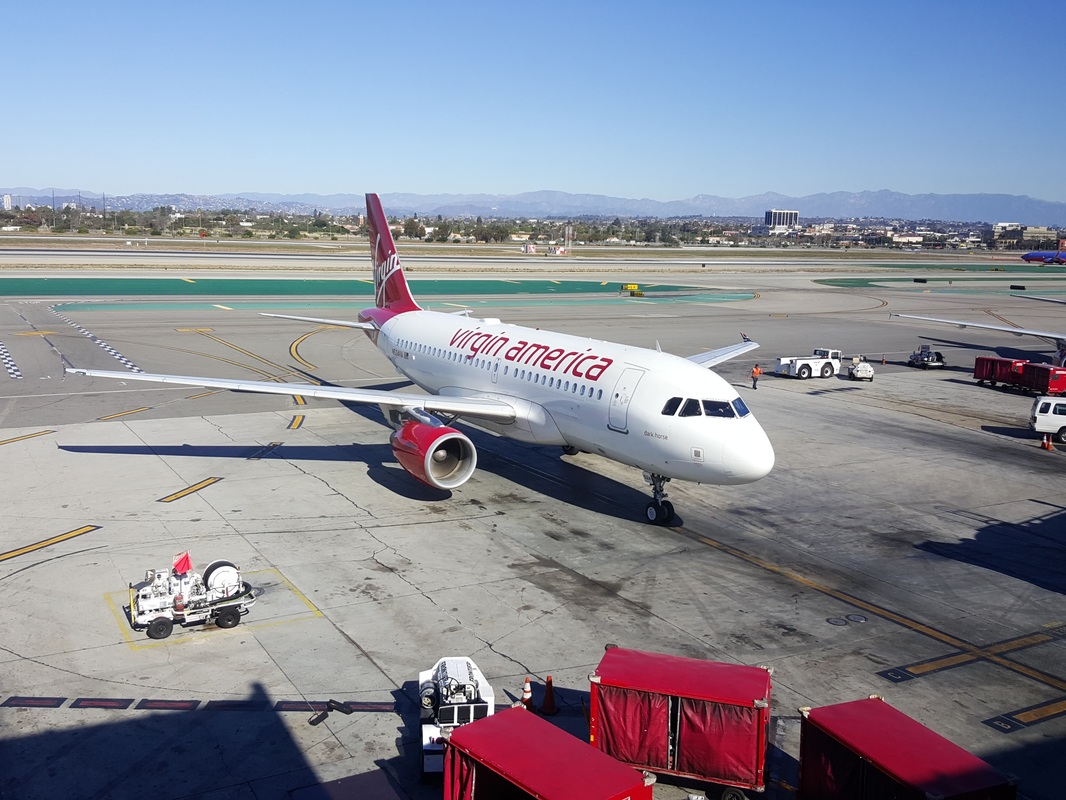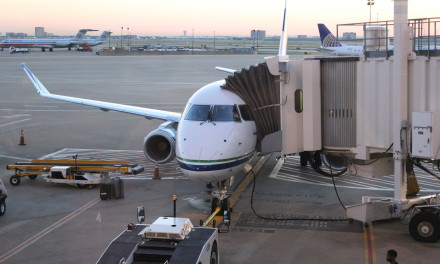ExpertFlyer.com – Find Flight Availability, Flight Upgrades & Awards, Frequent Flyer Information and more!
“In the interest of full disclosure, The Unaccompanied Flyer earns monetary compensation on selected links. When you click on an affiliate link, I may receive compensation for your purchase(s) through said link. These affiliate links are noted at the beginning of each post. Thank you for your continued support. Full Disclosure“
Winter Jet Steam Could Bring Up to 150 MPH Headwinds
It’s no secret that strong headwinds throughout the winter months often plague the continental United States and occasionally flights over the Atlantic. During the winter months, the jet stream pattern shifts bringing stronger winds over the United States.
Though you might not notice these stronger winds on the ground, airliners flying across the country do. These winter winds often add on or shave off an hour from the scheduled flight time. One notable example took place a couple of years ago in which a Boeing 747 operated by British Airways appeared to have broken the sound barrier on a flight from New York to London. This was not the case as the airspeed, the speed at which the aircraft was actually traveling was well under the speed that sound travels. The ground speed, however, did indicate supersonic airspeeds. This was due to the fact that ground speed factors in windspeeds that affect the aircraft. Needless to say, that particular aircraft flew to London with a remarkable tailwind.
Again, phenomena like the BA 747 above is all because of seasonal wind patterns. These seasonal wind patterns are often the strongest in the heart of the winter months (Dec-Feb). Now, recent forecast models from Weather Underground indicate that the winter jet stream is back in full-swing.
130 Knot Winds Over Mid-West Possible Thursday, Friday
According to Weather Underground, winds 130 knots (or 150 mph) at 32,000 feet (typical cruising altitude of an airliner) are forecasted on December 22nd, 23rd, and 24th. The area in which these winds are forecasted includes a large swath of the US from Indiana to Utah.
How Will These Strong Winds Affect Travel?
The extent to which these unusually strong winds will impact your travel depends on where you’ll be flying. If you’re flying along either coast or throughout the deep south, these winds shouldn’t impact your travel at all. Additionally, if you’re flying north-south or vice versa, you also shouldn’t expect any major impacts to your travel plans. It’s those flying from coast-to-coast or east-west and vice versa that could have their travel impacted.
Coast-to-Coast Travel
Those flying from one coast to the other could be greatly impacted by these extreme winter winds. Take the popular transcontinental route New York to Los Angeles. Flights departing from Los Angeles bound for New York have been averaging a flight time of roughly 4 hours and 25 minutes in the past few weeks. Scheduled time according to the airlines that fly this route is 5 hours and 20 minutes.Flights departing New York bound for Los Angeles have been averaging a flight time of around 6 hours and 25 minutes. Scheduled flight time is 6 hours and 10 minutes from the east to the west coast adjusted for the winter months.
Compare the eastbound flight time to flights departing New York bound for Los Angeles which have been averaging a flight time of around 6 hours and 25 minutes. Scheduled flight time is 6 hours and 10 minutes from the east to the west coast, however, were adjusted for the winter months.
- Flight time from JFK to SFO (Image: Flightradar24)
- Flight time from SFO to JFK (Image: Flightradar24)
Other than a two-hour difference between flights departing the east coast bound for the west coast and flights departing the west-bound for the east, some airlines could face diversions with this new round of extreme winds.
American Airlines, Alaska Airlines, Delta Air Lines, JetBlue Airways, United Airlines, and Virgin America all operate flights from coast-to-coast with narrowbody aircraft. Narrowbody aircraft include the Airbus a321, Boeing 737, and Boeing 757. These aircraft don’t typically pose a problem for travelers and airlines alike, however, when faced with 150 mph headwinds, diversions become a reality for many carriers. So, if you’re traveling from the east coast to the west coast in the next few days, it’s not out of the realm of possibility that you could experience a diversion due to fuel concerns.
What It Means for Non-Coast-to-Coasters
These extreme winds could also impact your flights even if you aren’t flying from Boston to San Diego or Miami to Seattle. However, the winds won’t affect your flights in the form of a fuel diversion or an hour delay. Clear air turbulence over the central United States also increases with these strong west to east winds. During the winter months, air turbulence becomes more intense and widespread beginning around the Rockies and often extending well into the Midwest. So if you’re flying from Kansas City to Las Vegas, expect a strong likelihood of some nasty bumps over Kansas, Colorado, and Utah.
Overall
150 MPH winds aloft are nothing to brush off. These extreme winter winds brought by the seasonal jet stream setting up over the central United States will likely cause refueling diversions and added flight time for many travelers. However, these aren’t the most powerful winds the US has experienced in recent years. Winds speeds at flight level 300 (30,000 feet) have exceeded 200 MPH. Not only are these winds not the strongest the US has ever seen but airlines are proactive in routing their aircraft around these strong winds. Air traffic control, the pilots, and airlines plan westbound routes by avoiding the strongest regions of the jet stream. Often times eastbound flights are routed along the jet stream to shorten the length of the flight and to save fuel.
Have you ever encountered extreme headwinds, tailwinds over the United States?

